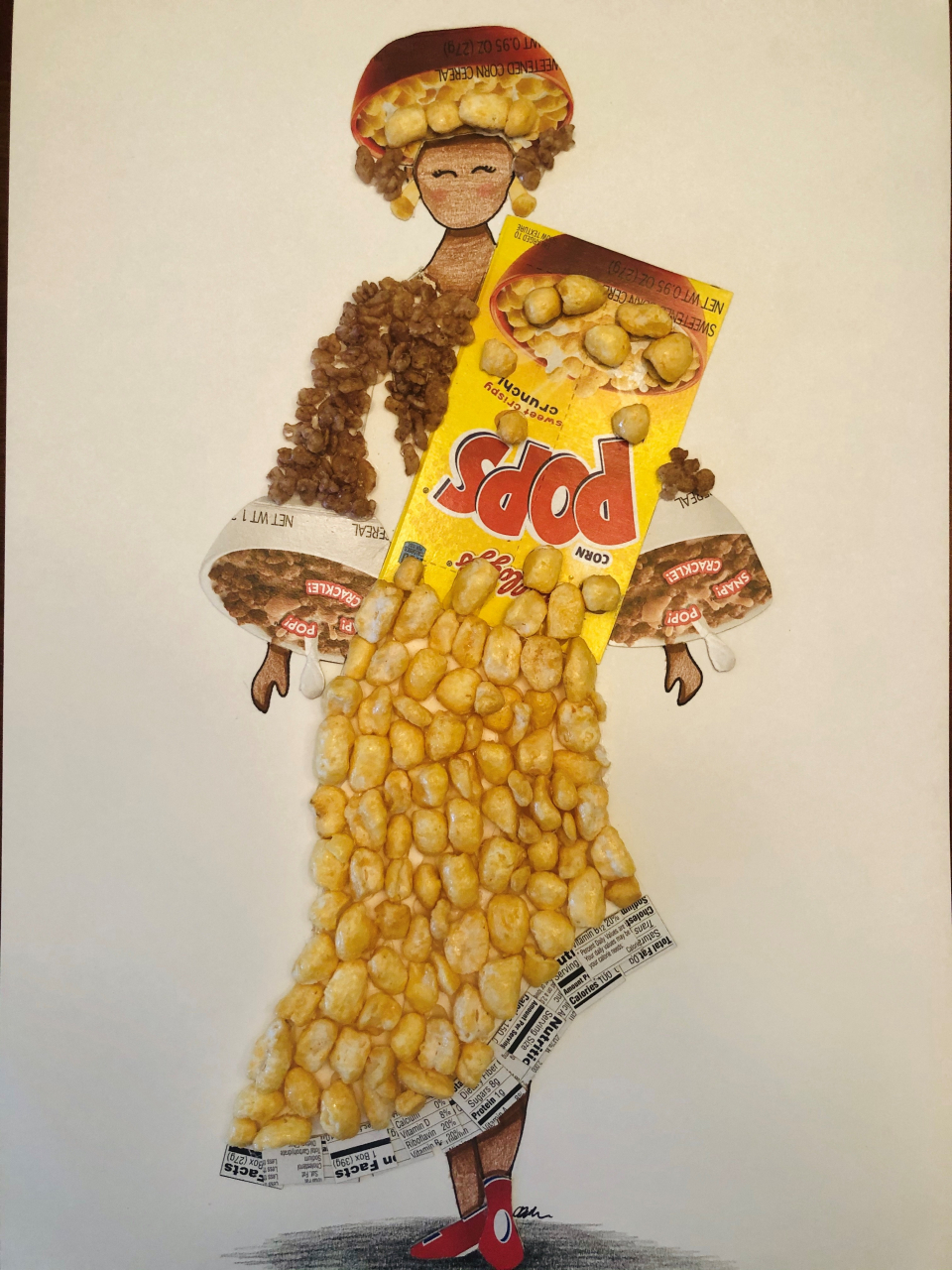By: Anastasia Drandakis
While performers find room to practice in the spaces of their homes, many of the set, costume, lighting, and other designers of the Department of Theatre find inspiration and materials in the same place. To accommodate the switch to online classes, professors in the Performing Arts Design Program (PADP) made the effort to give students projects with more creative freedom as they finished out the remainder of the semester. Several assignments became more about the creativity and theme around a play that in-depth dramaturgical research requires for designers in this field. Since students currently lack access to facility equipment and materials due to a need for social distancing, the professors looked to the outside art world for inspiration and brought it to their students.
One project that followed this path was for the Costume Design 1 class held by Brenda Van der Wiel, Associate Professor and Head of the Performing Arts Design Program. She took inspiration from fashion illustrator, Edgar Artis, and had her students create costume renderings out of found materials. In Brenda’s rendering example for her students, she designed an 18th-century dress using a bag of pumpkin spice potpourri.
“Edgar Artis’ work is just really interesting and refreshing to me,” said Van der Wiel, who had contemplated trying this project in her class on campus before the online shift. “They’re always fun to look at and he uses lots of different things to create his fashion designs. It just seemed like something that could easily lend itself to being done at home using whatever you could find in your house.”
Other PADP professors have been innovating unique projects for their remote design students. Michael Horejsi uses a virtual model of Studio 115 and video lectures to help his lighting design students choose cues for their final projects. Kyle Becker has students using the software Vectorworks to draft, build models, light, and film their work in a graphic design setting. Gage Williams even created a Joseph Cornell inspired shadow box project so that his set design class could utilize the dramaturgy work for an assignment that would have required the Design Studio to create a final model.
“We spend the first half of the semester just working on exploring the play’s concepts and how those ideas can be realized visually within their final design project,” said Williams, who has students that major in various aspects of the performing arts in his classes. “The most important thing for my students is understanding how a set designer thinks conceptually and breaks down the play through dramaturgical design research. Then they can take that conceptual work and translate it into their area of design; costumes, lighting design or even translate it into theatre teaching.”
Multiple PADP professors, including Van der Wiel and Williams, have heard that students have been grateful for the projects that help them to engage with their minds and work with their hands in a way that lectures and essays don’t support during this time.
“I definitely have more motivation to work on projects that have that creative freedom,” said Camille Dedman, a student from Van der Wiel's Costume Design 1 class. “I had plenty of time to think about what I wanted to do for this assignment and come up with something unique. Projects like these remind me that I can still be a theatre artist, even while away from the theatre!”
PADP professors worked with design students during the final weeks of the semester to complete their courses as smoothly as possible, and they will continue to innovate new ways to accommodate as the conditions for live theater and the performing arts evolves around the COVID-19 pandemic.


